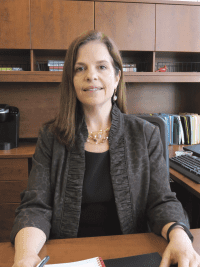Under Pressure – Physician Burnout Is Becoming a Public Health Crisis
Every day, patients rely on doctors to tackle their chronic health and wellness issues and make them feel better.
But what if it’s the doctors feeling miserable? Or stressed-out, anxious, and overwhelmed? Unfortunately, that’s happening constantly.
Burnout among physicians has become so pervasive that a new paper recently published by the Harvard T.H. Chan School of Public Health, the Harvard Global Health Institute, the Mass. Medical Society, and the Mass. Health and Hospital Assoc. deems the situation no less than a public health crisis.
“A Crisis in Health Care: A Call to Action on Physician Burnout,” as the document is titled, includes a number of strategies aimed at curbing the prevalence of burnout among physicians and other care providers, including improvements to the efficiency of electronic health records (EHRs), proactive mental-health treatment and support for caregivers experiencing burnout, and the appointment of an executive-level chief wellness officer at every major healthcare organization (much more on all of these later).
But the report also details just how extensive the problem is, and why it should be a concern for patients. In a 2018 survey conducted by Merritt-Hawkins, 78{06cf2b9696b159f874511d23dbc893eb1ac83014175ed30550cfff22781411e5} of physicians said they experience some symptoms of professional burnout — loosely described in the survey as feelings of emotional exhaustion, depersonalization, and/or diminished sense of personal accomplishment.
Physicians experiencing burnout are more likely than their peers to reduce their work hours or exit their profession. And that’s concerning in itself; the U.S. Department of Health and Human Services predicts a coming nationwide shortage of nearly 90,000 physicians, many driven out of practice due to burnout.
“The issue of burnout is something we take incredibly seriously because physician well-being is linked to providing quality care and favorable outcomes for our patients,” said Dr. Alain Chaoui, a practicing family physician and president of the Massachusetts Medical Society. “We need our healthcare institutions to recognize burnout at the highest level, and to take active steps to survey physicians for burnout and then identify and implement solutions. We need to take better care of our doctors and all caregivers so that they can continue to take the best care of us.”
While some have pointed to the passage of the Affordable Care Act (ACA) in 2010 — the most significant recent change in the American healthcare landscape — as a stressor, the roots of the crisis date further back, the report notes. For example, EHRs, mandated as part of the 2009 Reinvestment and Recovery Act, have dramatically changed the way doctors allot time to their jobs. And the 1999 publication of the Institute of Medicine’s “To Err is Human” report, highlighting the prevalence of medical errors, directed new attention to the need for quality improvement, physician reporting, and accountability — and brought heightened pressure.
In the past, the report notes, some have proposed ‘self-care strategies’ — such as mindfulness or yoga — as a response to burnout and presented some evidence of limited success with such approaches. However, physicians typically don’t have time to fit such coping strategies into their routine. They also don’t really address root problems. “Such an approach inaccurately suggests that the experience and consequences of burnout are the responsibility of individual physicians,” it continues. “This is akin to asking drivers to avoid car accidents without investing in repairing and improving hazardous roads. Simply asking physicians to work harder to manage their own burnout will not work.”
Digital Dilemma
As the report noted, a broad consensus has formed that a major contributor to physician burnout is dissatisfaction and frustration with EHRs, which have become ubiquitous in recent years. While the goal of transitioning to electronic records has been to improve quality of care and patient communication, the results have been mixed at best.
“The growth in poorly designed digital health records and quality metrics has required that physicians spend more and more time on tasks that don’t directly benefit patients, contributing to a growing epidemic of physician burnout,” said Dr. Ashish Jha, a VA physician and Harvard faculty member. “There is simply no way to achieve the goal of improving healthcare while those on the front lines — our physicians — are experiencing an epidemic of burnout due to the conflicting demands of their work. We need to identify and share innovative best practices to support doctors in fulfilling their mission to care for patients.”
As Dr. Atul Gawande, a Massachusetts surgeon, writer, researcher, and CEO of the nonprofit healthcare venture formed by Amazon, Berkshire Hathaway, and JP Morgan Chase, recently described it, “a system that promised to increase physicians’ mastery over their work has, instead, increased their work’s mastery over them.”
That’s because the patient encounter is now dominated by the demands of the EHR, undermining the crucial face-to-face interaction that has long been at the core of a satisfying doctor-patient encounter, the report notes, adding that, “for many physicians, EHRs impose a frustrating and non-intuitive workflow that makes excessive cognitive demands and detracts from, rather than reinforces, the goals of good patient care.”
In addition, the quantity of mandatory documentation imposed by EHRs — due to regulatory and payer requirements — means physicians typically spend two hours doing computer work for every hour spent face to face with a patient, including numerous hours after work. And they’re frustrated by spending so much time on administrative tasks they feel have little to do with actual patient care. One promising solution, according to the report, would be to encourage software developers to develop a range of apps that can operate with most, if not all, certified EHR systems.
Improved EHR usability is, in fact, required by law. The 21st Century Cures Act of 2016 mandates the use of open health care APIs (application programming interfaces), which standardize programming interactions, allowing third parties to develop apps that can work with any EHR. This would allow physicians, clinics, and hospitals to customize their workflow and interfaces according to their needs and preferences, promoting rapid innovation and improvements in design. Another promising but less-developed approach to reducing the HER burden on physicians, the report notes, is the development of artificial intelligence (AI) technologies to support clinical documentation and quality measurements.
Mind Matters
The report spends plenty of time on mental health, and for good reason.
“It is clear that one can’t have a high-performing healthcare system if physicians working within it are not well,” it notes. “Therefore, the true impact of burnout is the impact it will have on the health and well-being of the American public.”
To that end, it calls on hospitals and other healthcare organizations to improve access to, and expand, health services for physicians, including mental-health services — while reaching out to doctors and encouraging them to take advantage of such services in order to prevent and manage the symptoms of burnout.
That’s easier said than done, of course, as a stigma still exists around seeking help for mental-health issues.
“Physician institutions — including physician associations, hospitals, and licensing bodies — should take deliberate steps to facilitate appropriate treatment and support without stigma or unnecessary constraints on physicians’ ability to practice,” the report argues.
Last year, the Federation of State Medical Boards (FSMB) adopted a policy reconsidering ‘probing questions’ about a physician’s mental health, addiction, or substance use on applications for medical licensure or renewal, as the existence of such questions may discourage physicians from seeking treatment.
“To the extent that such questions are included,” the report says, “those questions should focus on the presence or absence of current impairments that impact physician practice and competence, in the same manner as questions about physical health.” The FSMB is also calling for state medical boards to offer ‘safe-haven’ non-reporting to applicants for licensure who are receiving appropriate treatment for mental health or substance use. Such non-reporting would be based on monitoring and good standing with the recommendations of the state physician health program (PHP).
Speaking of which, Physician Health Services Inc. (PHS) — a charitable subsidiary of the Massachusetts Medical Society that serves as the PHP for Massachusetts physicians — intends to reach out in a broader way to physicians and hospitals to encourage doctors dealing with burnout and behavioral-health issues to seek appropriate and confidential care. “
Many PHPs in other states have expanded their outreach,” the report notes. “Hospitals and other healthcare institutions should complement and support this effort by acknowledging physicians’ concerns with seeking mental healthcare and clearly identifying avenues and opportunities to receive confidential care, particularly for residents and trainees, who are at a vulnerable stage of their careers.
Finally, the report calls for the appointment of executive-level chief wellness officers (CWOs) at all healthcare organizations. “CWOs must be tasked with studying and assessing physician burnout at their institutions, and with consulting physicians to design, implement, and continually improve interventions to reduce burnout.”
The key responsibilities of the chief wellness officer, in addition to acting as an advocate and organizational focal point, may include studying the scope and severity of burnout across the institution; reporting findings on wellness and physician satisfaction as part of institutional quality-improvement goals; presenting findings, trends, and strategies to CEOs and boards of directors; and exploring technological and staffing interventions like scribes, voice-recognition technology, workflow improvements, and EHR customization to reduce the administrative burden on doctors, just to name a few.
CWOs could benefit physicians not just in hospitals, the report continues, but across health systems, and in affiliated practices. “Departments, units, and practices can survey for burnout, begin to identify their areas of focus and barriers to success, and collectively develop solutions. The CWO can help lead this process and provide best practices and other supports.”
Lives in the Balance
In the end, physician burnout is a problem with many triggers, which is why the authors of “A Crisis in Health Care” encourage a multi-pronged approach to counter it. But it’s also an issue with many potential consequences, not just for doctors and their employers.
“Patients do not like being cared for by physicians who are experiencing symptoms of burnout, which is significantly correlated with reduced patient satisfaction in the primary-care context,” the report notes. “Evidence further suggests that burnout is associated with increasing medical errors.”
Dr. Steven Defossez, a practicing radiologist and vice president for Clinical Integration at the Massachusetts Health and Hospital Assoc., said hospitals in the Commonwealth place a high priority on the safety and well-being of patients, so combating burnout will continue to be an area of focus.
“In particular, we recognize the need to further empower healthcare providers and support their emotional, physical, social, and intellectual health,” he said. “This report and its recommendations offer an important advance toward ensuring that physicians are able to bring their best selves to their life-saving work.”





Comments are closed.